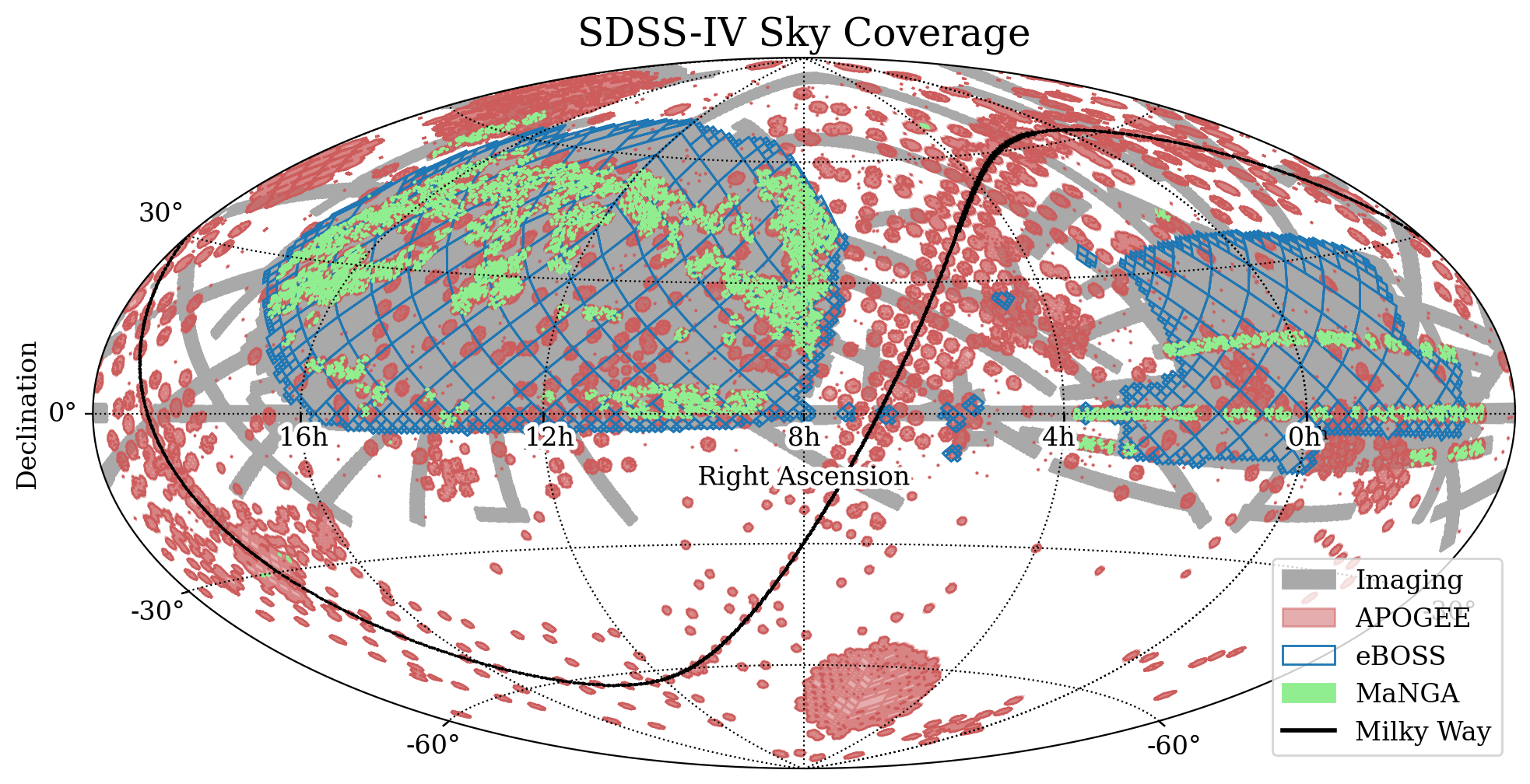About this Article
MAST Staff - 2025 Mar 31SDSS eBOSS Data Now Available at MAST
The SDSS Legacy Archive at MAST (SLAM) now includes data from the Extended Baryon Oscillation Spectroscopic Survey (eBOSS) survey!
The SDSS Legacy Archive at MAST (SLAM) is a partnership between the Sloan Digital Sky Survey (SDSS-V) collaboration and MAST, which will host a copy of all science-ready images, spectra, catalogs, and Value Added Catalogs (VACs) across all public SDSS data releases through SDSS-V. Data from the Mapping Nearby Galaxies at Apache Point Observatory (MaNGA) and Apache Point Observatory Galactic Evolution Experiment (APOGEE) surveys have been available for a few months.
Now, eBOSS data has been added to SLAM! The eBOSS survey provides optical-wavelength spectra for nearly 4 million targets, including quasars, stars, and galaxies. Supplementary catalog files contain observation summary information and measurements for each target, such as redshift and emission line strengths. This release contains products from SDSS Data Release 17 (DR17), which includes all observations from both BOSS and eBOSS surveys, collectively observed between September 2011 - January 2021. A summary of the eBOSS data products available at MAST can be found in the SDSS Legacy Archive at MAST User Manual.
Data Access
The SDSS Legacy Archive at MAST User Manual describes how to search for and download SDSS data using MAST interfaces. SDSS data can be accessed at MAST in-browser using the MAST Portal or in Python using astroquery.mast. Search for Mission="SDSS" to view all SDSS data, or use the "Provenance Name" field to search for specific SDSS surveys (for example, "eBOSS" or "APOGEE"). There are also a few Jupyter Notebook tutorials available which demonstrate how to access SDSS data through MAST.
All released SDSS data, including the raw data and pre-science data products, still remain available through the SDSS-provided services including the Science Archive Server (SAS) and Catalog Archive Server (CAS). The copies hosted at MAST provide an additional entry point to discovering and accessing the data, and provide all of the advantages of a multi-mission archive: SDSS data is now available through the same interfaces as HST, JWST, TESS, Pan-STARRS, and Gaia holdings, opening up new opportunities for scientific synergies between missions.
Links and Resources:


